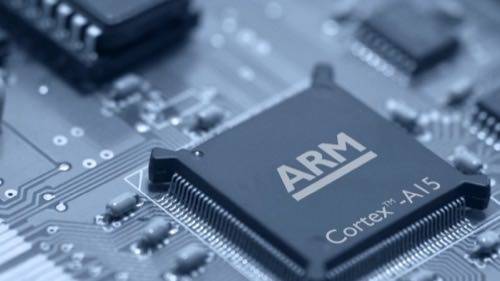
AMD is pushing its chips in on its commitment to ARM-based server technology, announcing the new “Seattle” ARM processor for launch in the second half of 2014.
The release of an ARM-based processor built specifically for servers, instead of the smartphones and other smaller electronic devices they currently power, marks a significant step in moving away from the power-hungry and heat-generating Intel-based chips that have dominated the server market for decades, as well as a big opportunity for AMD to get out of the shadow of Intel.
AMD is not the first manufacturer to commit to the creation of ARM-based processors for servers: Applied Micro Circuits announced that it would be launching its own 64-bit ARM Systems on a Chip back in April.
The “system on a chip” (SoC) name describes pretty much what these devices are: an entire server’s worth of hardware packed onto a single small chip. Only memory, which uses hard drives or solid-state storage, is not present.
AMD’s announcement this week will do a lot to fuel the increasing interest in ARM-based processors, a technology that could bring significant cost savings to hardware operations by bringing low-power ARM servers to market.
The ARM And Intel Dance
In “traditional” computing devices like laptops, desktop computers, and servers, there’s Intel, AMD, and well, that’s pretty much it. Intel has not only developed the x86 architecture that has been powering PCs and other devices for 30-odd years, it also builds the chips itself, licensing the specs to only one other company: competitor AMD.
Intel and AMD processors, since they share many of the same features and architecture, have a lot of things in common. For one thing, they are very powerful and, since they have been around for such a long time, plenty of operating systems can run on machines with these chips, including Windows, Mac OS X and Linux.
ARM processors, though, are not made by just one company like Intel. Instead, ARM Holdings only develops the core architecture and licenses it to any hardware maker that wants to use the design to make its own processors. Because of the way it is designed, ARM processors use very little power, which makes them perfect for personal electronic devices where battery resources must be frugally maintained.
Cloud Computing Is Hot
With the rise of cloud computing, many people are noticing that maintaining racks and racks of servers can get expensive. Processors, like the kind produced by Intel for servers, get hot. If they get too hot, things start melting, so you need to use even more energy to keep all those servers cool. You can’t make these servers too compact, either, or you can’t use air or water to pull the heat away.
The average Intel server processor pulls in something like 80 watts of power just to run. But a multi-core ARM SoC draws only about 4 watts of power. Remember, that’s a whole system on a chip, too, not just the processor.
Less power means less resistance and less heat. Less heat means less money wasted on cooling and more capability to compress ARM-based systems together.
If the implementation is successful – meaning that if the chips actually perform well, don’t break down and don’t cost more than their Intel-based equivalents – then large-scale data centers should see a significant reduction in power and cooling costs, and an increase in computing power per square foot, since theoretically you can jam a lot more SoCs into the space of a single server box.
ARM Not The Magic Solution
There is one additional catch: as nifty as ARM servers would be, applications and operating systems will still have to be ported so they can run on ARM processors. Some Linux distributions and Windows RT already do have various levels of ARM support, but the problems with the ARM-based Microsoft Surface RT reflect the fact that there are still a lot of applications that need to be ported from Windows to Windows RT.
Perhaps for these reasons, AMD isn’t going all in on the Seattle chips. The company also announced it will be shipping Intel-based “Berlin,” available in both a plain CPU version as well as an advanced processing unit that will integrate a graphics co-processor. “Warsaw” was also introduced, a high performance computing processor that should compete with Intel’s Xeon product line.
Intel itself has yet to directly respond to this sudden interest in ARM chips for servers, but they’re aware of it. In the mobile device sector, where ARM dominates for now, Intel’s Clover Trail+ Atom chips are getting very good processing speed for lower power costs than equivalent ARM-based processors.
Meanwhile, in the server sector where ARM is starting to creep in, Intel’s Haswell-based processors have enough power savings of their own to fend off ARM technology… but they are still pretty expensive compared to their ARM counterparts. But if Intel can make the case that the power savings in Haswell and no need to port applications from x86 to ARM-based platforms is enough to offset the cost difference, then Intel should be able to stay in the game.
A processor fight that decreases power use, in the long run, is something that all customers will be able to cash in.
Image courtesy of ARM Holdings.
















